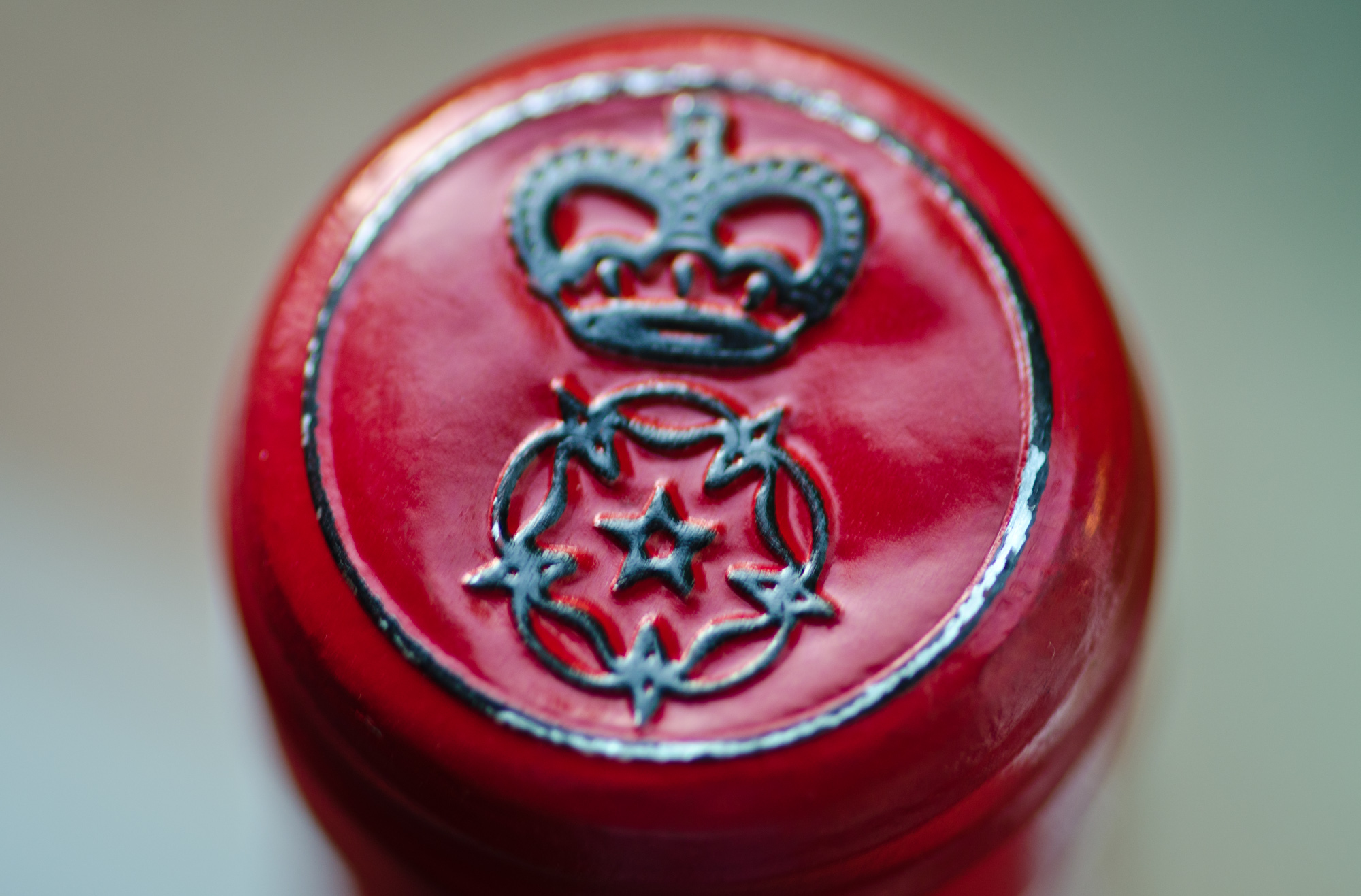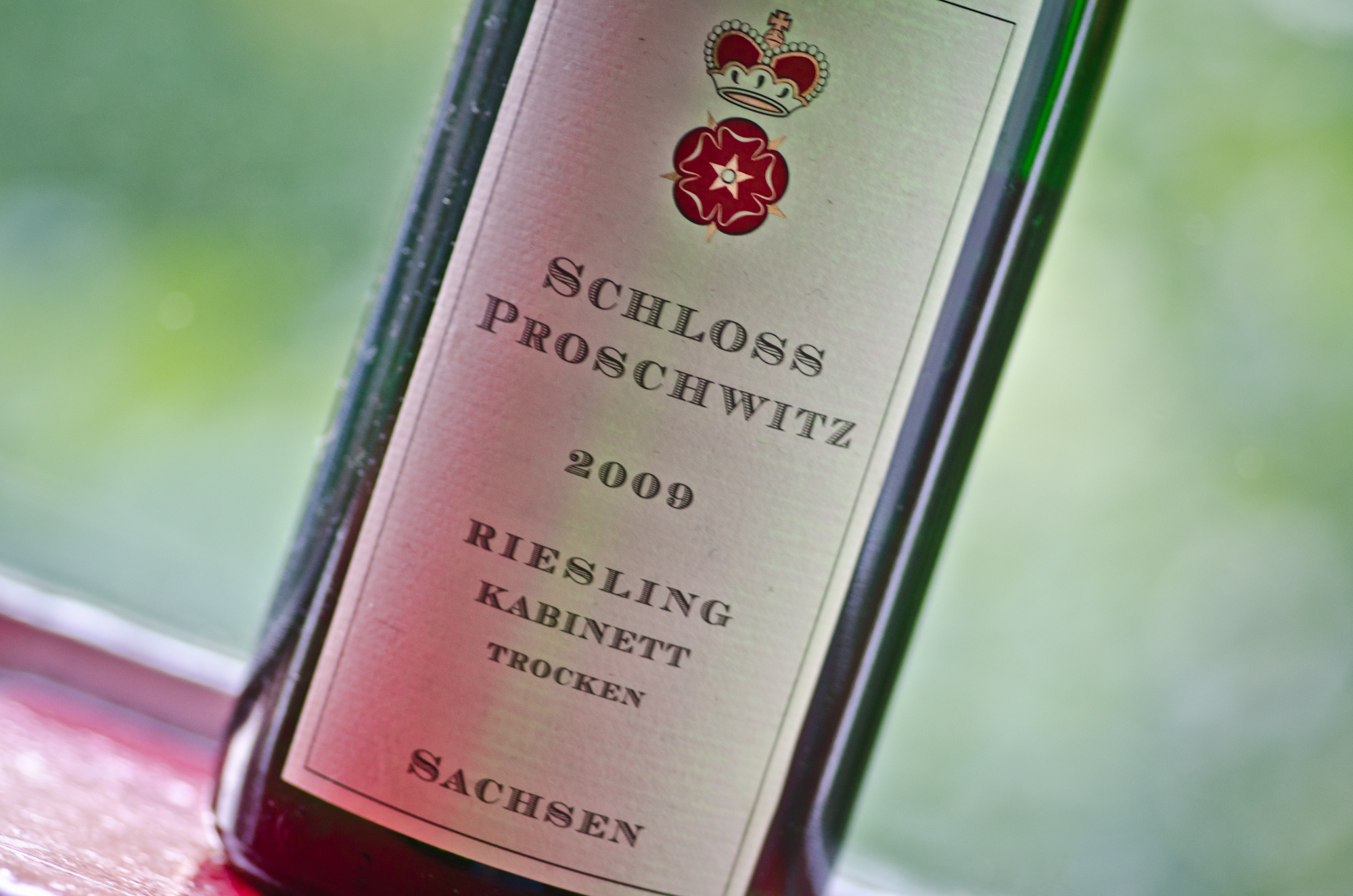Schloß Proschwitz, Riesling Kabinett trocken, 2009
In our quest for interesting wine, we have ventured as far east of Germany as to Georgia, but we never have explored what the German East has to offer. Now it is time to make good on one of our new year's resolutions and try a wine from Saxony. North of the 51st parallel, Sachsen is Europe's north-easternmost wine growing region, and with about 500 ha of vines it is one of Germany's smallest. A fifth of the Saxonian vineyard area belongs to the zur Lippes, one of the oldest aristocratic families of Germany.

After the wall came down, the current prince zur Lippe, Georg, started buying back his family's property that was lost after the Second World War, and now he runs the largest privately owned winery in the German East. We had tried a few of his wines at tastings in the past, but the dry 2009 Riesling here is the first to undergo the rigorous testing at Wine Rambler HQ.
A little while ago I flew to Berlin to present a conference paper, and thanks to the delayed-as-usual EasyJet I had a quite a bit of time to explore Berlin Schönefeld airport. Sadly, the shopping is dire, but the duty free shop had a few German wines, giving me the chance to make good on our resolution to try Saxonian wine. We might have ventured into Saxonian wine earlier, but it seems to be unheard of in the UK and is also rare in Germany, so I did not hesitate to buy a bottle at the airport.
Growing wine so far north is not easy, but the Proschwitz vineyard has a favourable micro-climate, with its south and south west facing hills adjacent to the river Elbe. On the typical loam soil of the region, Georg zur Lippe grows mostly white wine (Pinot Gris, Pinot Blanc, Riesling, Elbling, Traminer, Scheurebe and the rare Goldriesling), but also Pinot Noir and Dornfelder.

My duty-free Riesling Kabinett (for €15.90 hardly a bargain price though) has pale straw colour with a touch of green, fairly light around the edges - not exactly a picture of substance. The bouquet is pleasant, fresh and light with charming citrus fruit, a spritz of grapefruit, caramelised peach and some herbs, also a little tobacco perhaps.
On the tongue the grapefruit features again, as does the peach, but there are also green apple and strong lime flavours. This does not only give the Riesling fresh fruit flavours, there is also a lot of freshness from the acidity. Despite a hint of residual sugar, the acidity at moments feels a little too strong, especially when it flashes back after a mineral dry finish. Altogether, the Proschwitz Riesling has something "limoartiges", as the Germans would say - like soda pop or lime lemonade it is easy to drink, but left us a little empty.
Overall not a bad showing from Saxony, but the lemonade style and the acidity for me never came quite together, leaving me somewhat unexcited. For around twelve or thirteen Euro, this is what it sells for in shops in Germany, I would expect more substance, balance and especially excitement.
